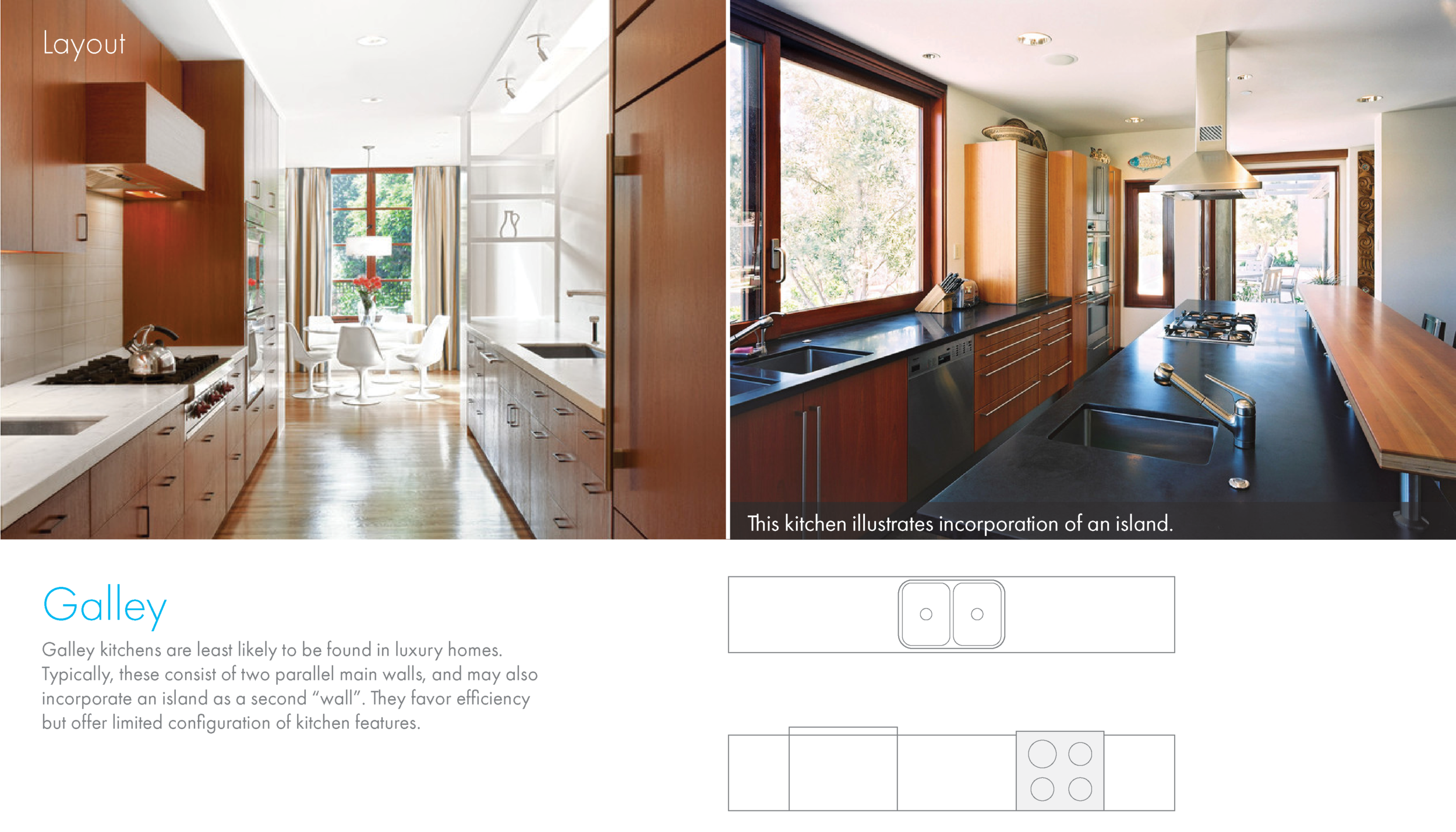PROJECT BRIEF
Analysis the luxury kitchen market in North America with the goal of finding a market space opportunity for Samsung appliances
Interview industry experts to get their insights into current and future luxury kitchen trends
Client: Samsung
Role: Senior Designer
Year: 2018
Project Timeline
Research
Defining LuxuryThe definition of luxury has progressed with the times. What was once based around flaunting of material wealth and excess, has now evolved into intangible experiences. There is less focus on the tangible products, but rather a focus on the human experience associated with the consumption of the products.
“Who I Am” not “What I Have”
The shift into experiential luxury has caused consumers to break free of expected behaviors based on age, gender, location, and income bracket. This divergence helps promote the trending importance of personal identity. Luxury items are moving beyond symbols of status as they become an indicator of individuality that sets one apart from the masses.
Trends in the Luxury Landscape
Louis Vuitton used male actor, Jaden Smith, to model womenswear
Lamborghini markets a supercar towards women and families
Dolce & Gabbana launches a graffiti street art campaign
Swiss watchmaker, Richard Mille, collaborates with graffiti artist, Cyril Kongo Phan
2018 Interior Design TrendsKitchen LayoutAs the perception of luxury shifts focus from the flaunting of material wealth to that of personal identity and experience, the layout of the kitchen can come in as many flavors as there are individuals. Regardless of the owner’s personal tastes, all kitchens use, or are derived from, three core layouts*.
Marketplace ResearchHome Exteriors
Architectural Styles of New Home Construction (2017-2018)
In researching the styles of homes throughout North America we found there were only slight trends in home style in each region.
Kitchen Interiors
Top 6 Styles by Population Area
There has been a distinct rise in a more homogenous style of kitchen recently. The custom styled kitchen is becoming less common.
Kitchen Profiles
For the profiles of real world kitchens the homes were split into 4 regions (West, Midwest, South and Northeast). In profiling existing kitchens in North America we hope to find a trend in kitchen designs.
A regional snapshot was created to help align the client with some basic information about the area.
Using images of kitchens through websites like Zillow, a profile of real world luxury kitchens was created.
Industry Expert InterviewsIn order to get a better insight into the kitchen market interviews with industry experts were conducted. Interviewees included, interior designers, housing developers, and realtors. Their expertise helped give insights into some opportunity areas and current trends in the market.
This is an example of an interview card.
Insights
Suburban vs. UrbanThrough the research a discovery was made to how we were approaching opportunity spaces. We began the research trying to discover different trends through the different regions of North America. What we actually discovered was the 2 true markets were between Suburban and Urban markets. By looking at the data we collect through that lens we could see better opportunity areas for Samsung to penetrate.
Migration into citiesOnce we had changed our focus from Regionality to Suburban vs. Urban, we were able to find that in 2018 there was a shifting demographic that was moving more towards the city. This migration was mostly due to Millenials beginning to come into an age where they were looking towards purchasing homes.
The Migrating Baby Boomer
This decade is seeing a 36 percent growth in the population aged 65 and older. It is estimated that Baby Boomers will control about 70 percent of the country’s disposable income. Retirees are also finding themselves move from suburban environments to urban ones, with the focus being on close to leisurely activities. With children no longer in the picture, maintaining a large home is no longer sensible. “Retirees may have downsized their living space, but they say they upgraded their lives.”The economic clout that this generation wields is also causing cities to lure Baby Boomers, by redesigning services and infrastructure to cater to older populations.
The Biggest Generation
As of 2016, Millennials have surpassed Baby Boomers and have become America’s largest generation. Eschewing the habits of their predecessors, this generation has avoided features of suburban living, in favor of the urban. Educated Millennials are also an important factor behind this shift into urbanization, with the 33 largest metro areas in the country adding 1.52 Millennial for every 1 in their surrounding suburbs. This migration is seen as a big enough shift that suburban areas have begun acting to retain this generation. Suburban “downtown” areas are being refreshed with new concert venues, ethnic restaurants, more parking, and new pavements and facades.
sources: Forbes, New York Times, Fiscal Times, CBS News “Retirees
Boomers/Gen X/MillenialsIn the search for opportunity areas there was a noticeable difference between the generation’s priorities. Boomers, Gen Xers, and Millenials are at different points of their home owning timeline. The effect of this is the opportunity areas that each of these groups offer for luxury appliances.
Strategic Opportunities
From B2C to B2BWith the influx of people looking to move into Urban areas, there has been a growth in luxury multi-unit housing develops in cities. With this comes an opportunity for Samsung to partner with these developers to furnish buildings with appliances. Focusing from a B2C market (where Samsung sells to stores which in turn sell to consumers) Samsung could go straight to developers and create partnerships.
The Millenial MarketThe biggest opportunity space found for Samsung was amongst the Millenial new homeowner market place. While most are not yet ready to purchase new homes/appliances there are opportunities to establish a brand presence before then.













